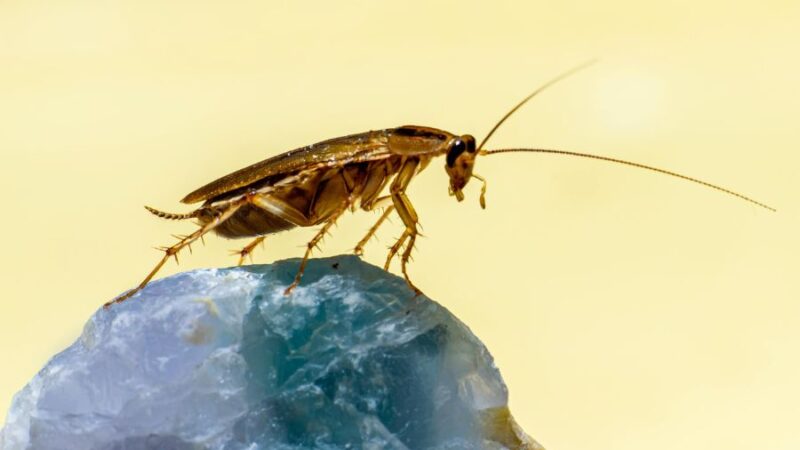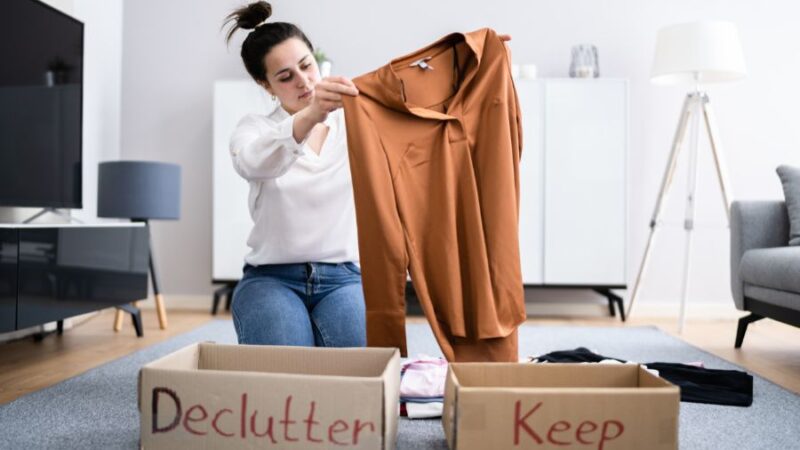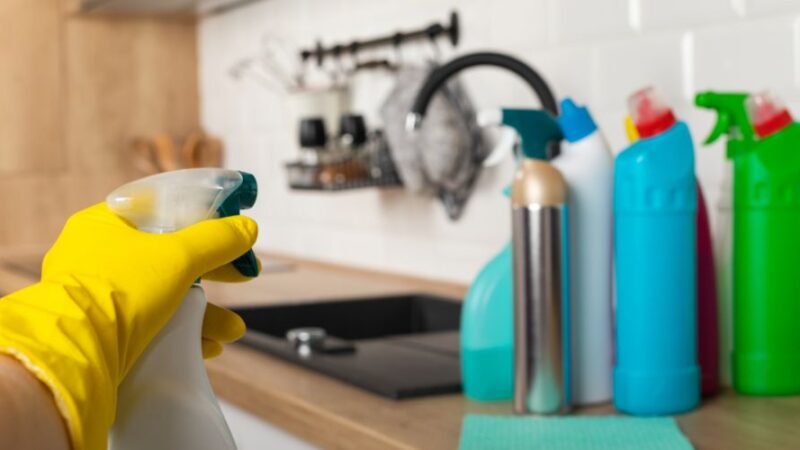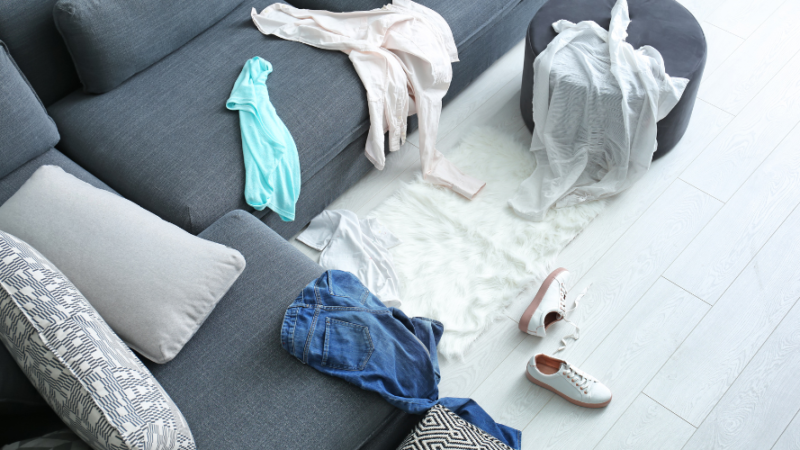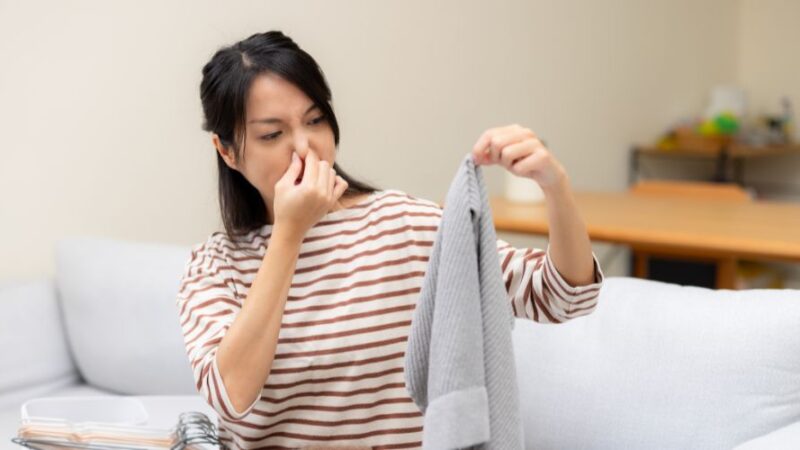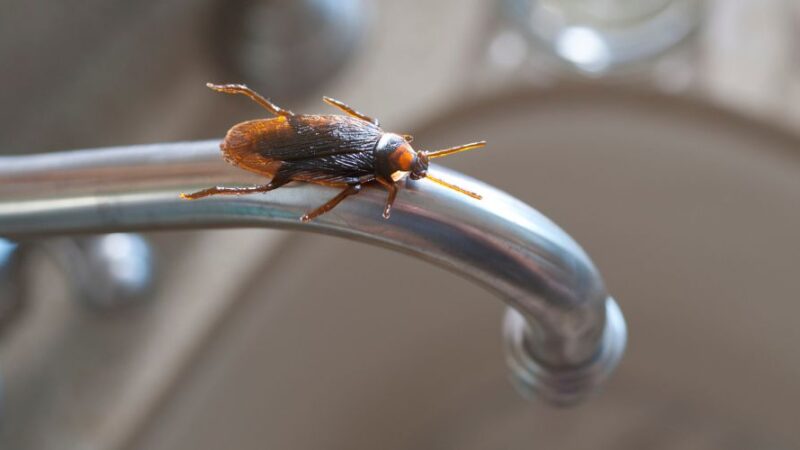How to Disinfect Your Home During Cold and Flu Season
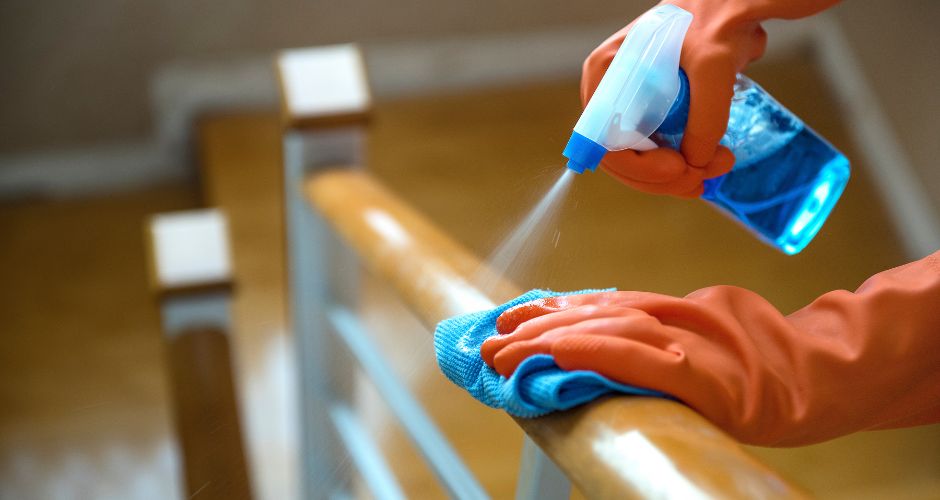
When cold and flu season hits, your home can quickly become a hub for bacteria and viruses. Whether you have kids in school, roommates, or visitors coming and going, disinfecting your home becomes a top priority-not just cleaning it.
Cleaning removes dirt.
Disinfecting kills viruses and bacteria that can make you sick.
So, if you’re wondering how to effectively protect your home during peak illness season, you’re in the right place. Let’s break down everything you need to know-How to Disinfect Your Home During Cold and Flu Season.
Cleaning vs. Disinfecting: What’s the Difference?
Before jumping into the how-to, it’s important to understand the difference:
- Cleaning = physically removing dirt, dust, and debris from surfaces (e.g., wiping a counter with soap and water).
- Disinfecting = using chemicals to kill germs, bacteria, and viruses on surfaces.
Why Disinfection Matters During Cold & Flu Season
Cold and flu viruses (especially influenza and RSV) can live on surfaces from a few hours to several days. Touching a contaminated doorknob or remote, then touching your face, could be all it takes to get sick.
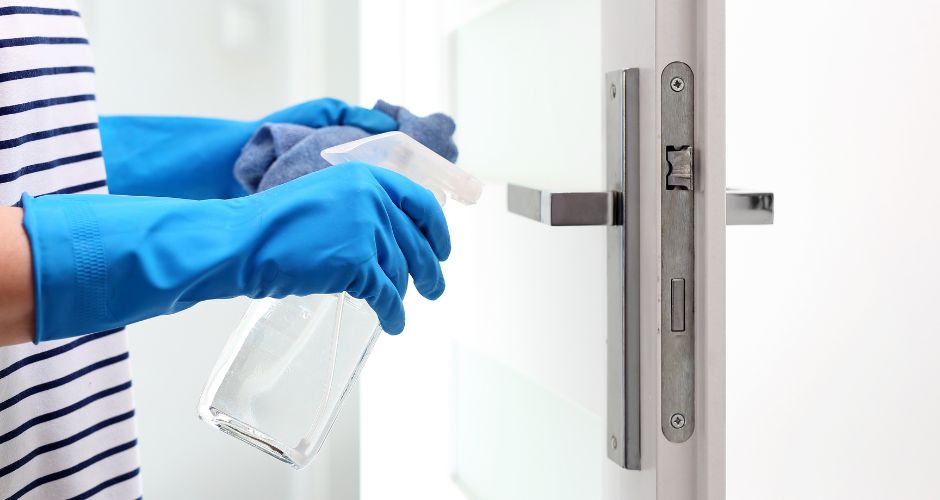
Common ways viruses spread in the home:
- Shared surfaces (light switches, faucets, remotes)
- Hands touching the face after contact with germs
- Airborne droplets landing on tables or countertops
Can a Dirty Home Be Making You Sick?
Germ Hotspots in Every Home
These areas should be disinfected regularly, especially during flu season:
- Doorknobs and handles
- Light switches
- Kitchen counters
- Refrigerator handles
- Toilet flush levers
- Bathroom sinks and faucets
- Remote controls
- Smartphones, tablets, keyboards
- Shared towels or bedding
What Happens If You Over-Wet Your Carpet During Cleaning?
How to Disinfect Your Home During Cold and Flu Season
Here’s how to disinfect your home the right way:
1. Clean First
Remove visible dirt or grime. Use a mild detergent or soap and water.
2. Use the Right Disinfectant
Choose EPA-approved disinfectants that are effective against viruses like influenza and SARS-CoV-2 (COVID-19). Look for:
- Clorox® Disinfecting Wipes
- Lysol® Disinfectant Spray
- Hydrogen peroxide solutions
- 70% isopropyl alcohol for electronics
3. Let the Disinfectant Sit
Apply and allow it to dwell for the recommended time (usually 4–10 minutes) before wiping.
4. Don’t Mix Products
Never mix bleach with vinegar or ammonia-it can create toxic fumes.
How Often Should You Disinfect?
During cold and flu season, follow this frequency:
| Area/Item | Recommended Frequency |
| Doorknobs & handles | Daily |
| Kitchen counters | After food prep or daily |
| Bathroom surfaces | Daily or every other day |
| Electronics | Every 1–2 days |
| Bedding (if someone’s sick) | Every 2–3 days or after illness |
Semantic keywords: home disinfection schedule, daily disinfecting, flu prevention cleaning
Natural Alternatives for Disinfecting
For families with small children, pets, or sensitivities to chemical cleaners, consider natural disinfecting options, though note: they may not be as effective against all viruses.
- White vinegar and baking soda (good for surfaces, but not true disinfectants)
- Essential oils like tea tree, eucalyptus, and lavender (have mild antibacterial properties)
- Hydrogen peroxide (effective disinfectant that breaks down into water and oxygen)
A Family’s Flu Prevention Plan
The Garcia Family has three school-age kids and live in a busy household.
During flu season, they:
- Set up a “sanitize station” by the front door with hand sanitizer and disinfecting wipes
- Disinfect lunchboxes, backpacks, and phones every evening
- Use separate hand towels for each family member
- Disinfect shared remotes, switches, and handles nightly
- Use a humidifier and air purifier to maintain air quality indoors
Result? They’ve reported fewer illnesses over the past two winters.
What to Do If Someone Is Sick at Home
If someone in the house is already sick:
Create a Sick Zone
Keep the sick person in one room as much as possible. Limit their access to shared spaces.
Use Disposable Supplies
Use paper towels, tissues, and disposable utensils when possible.
Clean & Disinfect More Frequently
Pay extra attention to the bathroom, doorknobs, and laundry.
Semantic keywords: prevent household illness, cleaning after sickness, isolate sick family member
Bonus Tips for a Healthier Home
- Improve air quality with a HEPA filter or open windows when possible
- Wash hands frequently (use warm water and soap for 20 seconds)
- Replace sponges and cloths weekly-they harbor bacteria
- Launder blankets, throw pillows, and curtains more often in winter
- Limit guests or ask visitors to sanitize before entering
FAQs: Disinfecting Your Home During Flu Season
Q1: Can I use vinegar to disinfect surfaces?
No, vinegar can clean but does not kill all viruses and bacteria. Use EPA-registered disinfectants for serious sanitation.
Q2: How long can flu viruses live on surfaces?
Up to 24–48 hours depending on the surface (hard plastic or steel = longer survival than fabric or paper).
Q3: Should I disinfect groceries or packages?
Not necessary anymore. Just wash your hands after handling packages and clean surfaces where you unpack them.
Q4: Can I make a DIY disinfectant spray?
Yes, using 70% alcohol or a bleach-water mix:
- 5 tablespoons (1/3 cup) of bleach per gallon of water
- Use within 24 hours and never mix with other chemicals
Q5: Should I disinfect my car too?
Absolutely-especially door handles, steering wheel, gear shift, and touchscreen. Use alcohol-based wipes or sprays.
Final Thoughts: Disinfection is Prevention
The cold and flu season doesn’t have to take over your household. With a smart disinfection strategy, you can protect your family, maintain a healthier space, and reduce the spread of illness.
A clean home is great, but a germ-free home is even better. Start with high-touch surfaces, use the right products, and make disinfection a regular habit-not just a reaction to illness.

